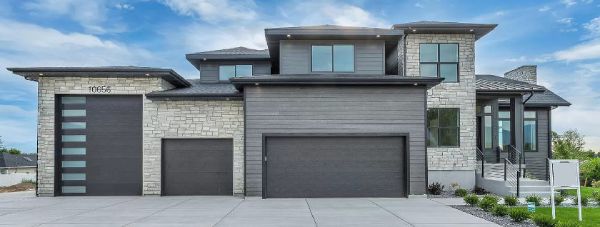Finding the right plants for those dark corners in your home can be challenging, but many houseplants thrive in low-light environments. These plants can bring life and greenery to spaces that don’t get much direct sunlight, adding a lush, natural vibe to your home.
Best Indoor Plants For Dark Rooms & Corners
Certain houseplants have adapted to low-light conditions and thrive in the shadowy parts of your home. These plants are not only resilient but also low-maintenance, making them perfect for people who want to add greenery to their space without needing much sunlight. Here’s a list of ten low-light houseplants ideal for dark corners.
- Aglaonema
- Peace Lily
- Dracaena Trifasciata (Snake plant)
- Peperomias (Radiator Plant)
- Begonias
- Parlor Palm
- Boston Fern
- Pothos
- Philodendrons
- Black Anthuriums
1. Aglaonema
Aglaonema is a slow-growing plant that can reach heights of up to 3-4 feet. It’s perfect for poorly lit rooms, as it can survive in low-light conditions for long periods. However, keep in mind that Aglaonema is sensitive to cold air, so avoid placing it near drafts. This plant requires watering only once every two weeks, making it an easy-care option for those dark, cozy corners in your home.
2. Peace Lily
The Peace Lily is a graceful flowering plant that produces stunning white blooms throughout the year. Ranging from 1 to 4 feet tall, it’s one of the best plants for low-light environments, even tolerating fluorescent lighting in office spaces. Peace lilies prefer to be kept moist, so check the soil regularly and water when necessary. This plant adds a sophisticated touch to any room with its elegant appearance.
3. Dracaena Trifasciata (Snake plant)
Known for its striking upright leaves, the Snake Plant is one of the most low-maintenance houseplants around. It thrives in low-light conditions and can grow to impressive heights—up to 10 feet tall. Water your Snake Plant about once every week or two, ensuring the soil dries out between waterings. With its bold appearance, this plant is perfect for modern interiors and dark corners.
4. Peperomias (Radiator Plant)
Peperomias are versatile houseplants that thrive in low to medium indirect light, making them ideal for darker rooms. These plants are compact, growing up to 6 inches to 3 feet tall, and require minimal care. They need watering every 1-2 weeks, allowing the soil to dry out between waterings. Peperomias are perfect for adding a pop of greenery to low-light areas like bedrooms or living rooms.
5. Begonias
Begonias are beloved for their vibrant and patterned leaves, which can brighten up darker rooms. While begonias need to be watered every two to four days, they adapt well to low-light spaces. Depending on the species, begonias can grow between 8 inches to 2 feet tall, making them a versatile choice for many indoor environments. They add a splash of color to any dim corner.
6. Parlor Palm
Parlor Palms are a fantastic option for low-light areas where other plants struggle. These slow-growing palms can reach heights of 6 to 16 feet, and they thrive in rooms where you can read without artificial light during the day. Parlor Palms need weekly watering, and during winter months, you can cut back to watering every two weeks. They are also pet-friendly and require little maintenance, making them an ideal plant for shady spaces.
7. Boston Fern
Boston Ferns are perfect for dark corners, especially in humid spaces like bathrooms. They prefer low light and high humidity and should be misted frequently to keep their leaves looking fresh. These ferns can grow over 1 meter in height and width, with proper care taking up to ten years to achieve full size. Keep the soil consistently moist, but not soggy, for the best results.
8. Pothos
Pothos is a hardy climbing plant that thrives in low-light rooms. It’s an evergreen vine that can grow up to 20–40 feet long and 3–6 feet wide. Water your Pothos once every two weeks, allowing the soil to dry completely between waterings to avoid root rot. This plant is excellent for hanging baskets or trailing along shelves in darker spaces and can live for five to ten years with minimal care.
9. Philodendrons
Philodendrons are versatile, low-light houseplants that grow well in dimly lit rooms. While they grow faster in indirect sunlight, they can adapt to low-light conditions and still thrive. A mature philodendron can reach 6 feet in height and width, making it a great addition to indoor spaces. Water them weekly, ensuring the soil dries between waterings, and avoid placing them in direct sunlight.
10. Black Anthuriums
Black Anthuriums are striking plants that, while they prefer indirect sunlight, can tolerate lower light conditions. These plants grow to about 12-18 inches tall indoors and have beautiful dark, glossy leaves. Anthuriums should be watered when the top inch of soil dries out, generally every 7-10 days. With their dramatic appearance, they make a bold statement in any room, even in the shade.
Why Are Houseplants Ideal For Dark Corners?
Houseplants like the ones mentioned above can thrive with minimal sunlight. These plants are adapted to photosynthesize with less light, which makes them perfect for shady areas. Additionally, houseplants can help purify the air, remove toxins, and increase humidity, making your indoor environment healthier.
Can Plants Grow In The Dark?
While plants need light to fuel photosynthesis, some can survive in low-light conditions by using stored energy. However, most plants will eventually require some light to continue healthy growth. While they can survive temporarily in dark rooms, they thrive best with at least some indirect light.
Why Can’t Most Plants Grow In Dark Places?
Plants rely on sunlight for photosynthesis, which is essential for converting carbon dioxide and water into food. Without light, this process can’t occur, and over time, the plant will deplete its stored energy and perish. Therefore, while low-light houseplants can thrive in shaded areas, they still need some level of light to survive long term.







